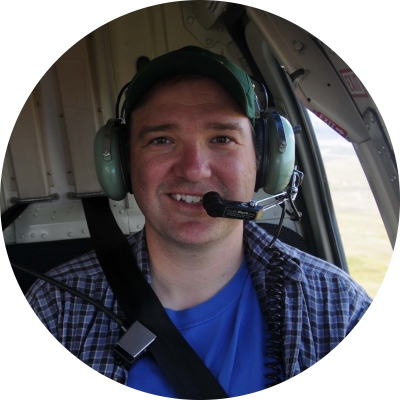Glen MacKay
Education: Master of Arts (Anthropology)
Home organization: Prince of Whales Northern Heritage Centre
Research statement:
I am the manager of the NWT Cultural Places Program (CPP) with the Government of the Northwest Territories. I manage the CPP’s work to protect and investigate archaeological sites in the NWT, as well as our work to promote and recognize Indigenous community and geographical place names. My research revolves around community-based approaches to conducting archaeological studies – using archaeological methods to assist communities with their objectives related to culture and heritage. My research also addresses climate change impacts on archaeological sites and cultural landscapes in the NWT, including the erosion of coastal archaeological sites, melting alpine ice patches, site disturbances caused by thawing permafrost, and forest fire impacts on wood surface features. We are using many different methods to tackle this issue, from working with Indigenous elder to map areas of cultural significance to using remote-sensing technologies to detect impacts and create detailed records of archaeological sites at risk.
Description of Research Program:
My current research project is the Shutagot’ine Cultural Landscape Project (SCLP). The SCLP is a community-based project in partnership with the Tulita Dene Band. The objectives of the SCLP are to study significant archaeological sites at risk of impact from climate change–linked processes in the Mackenzie Mountains, including historic caribou and sheep fences and ancient alpine ice patches, and to restore Shutagot’ine geographical place names for mountains, river, lakes, and other features in the Mackenzie Mountains as official names in Canada. The SCLP draws on traditional knowledge and science perspectives to learn about Shutagot’ine land use, and employs diverse methods to create detailed records of Shutagot’ine hunting sites, including high-resolution recording using unmanned aerial vehicles, dendrochronology techniques to determine when fence structures were built, and map-based interviews with Shutagot’ine elders to build knowledge about Shutagot’ine geographical place names.
Scientific Contributions:
1. MacKay G, Andrew L, Smethurst N, and Andrews TD. 2019. Rapid loss of perennial alpine ice patches in the Selwyn and Mackenzie Mountains, NWT. In State of the Mountains Report, Volume 2. Edited by L. Parrott, Z. Robinson, and D. Hik. The Alpine Club of Canada, Canmore, AB., pp. 26-28.
2. MacKay G, and Smethurst N. 2018. Climate change and the coastal erosion crisis in the Northwest Territories. Oral presentation at the 51st Annual Meeting of the Canadian Archaeological Association, Winnipeg, MB.
3. MacKay G, and Andrews TD. 2016. The precontact history of subarctic Northwest Canada. In Oxford Handbook of the Prehistoric Arctic. Edited by TM Friesen and O Mason. Oxford University Press, Oxford. pp. 563-584.
4. Andrews T.D., MacKay G., and Andrew L. 2012. Archaeological Investigations of Alpine Ice Patches in the Selwyn Mountains, Northwest Territories. Arctic 65(5):1-21.
5. Andrews T.D., MacKay G., Andrew L., Stephenson W., Barker A., and the Shuhtagot’ine elders of Tulita. 2012. Alpine ice patches and Shuhtagot’ine Land Use in the Mackenzie and Selwyn Mountains, Northwest Territories, Canada. Arctic 65(5):22-42.
6. MacKay, G., Burke, A.L., Gauthier, G., and Arnold, C.D. 2013. Mackenzie Inuit lithic raw material procurement in the lower Mackenzie Valley: The importance of social factors. Arctic 66(4): 483-499.

